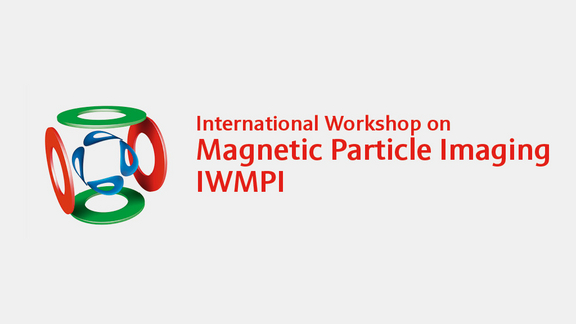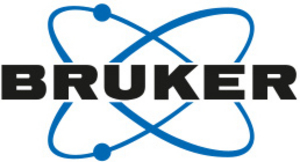International Workshop on Magnetic Particle Imaging
14th IWMPI: March 17-19, 2025 | Fraunhofer IMTE | Lübeck, Germany
Workshop Chair
Workshop Chair
Workshop Chair
Workshop Chair

Keynotes

Emine Ulku Saritas is an Associate Professor of Electrical and Electronics Engineering at Bilkent University. She received her Ph.D. degree in 2010 from the Department of Electrical Engineering at Stanford University. She was a postdoctoral fellow at the Department of Bioengineering at University of California, Berkeley between 2010-2013. Her research focuses on developing novel contrast methods and high-resolution imaging techniques, particularly for magnetic particle imaging (MPI) and magnetic resonance imaging (MRI) systems. She is the recipient of the Lucent Technologies Stanford Graduate Fellowship, Siebel Stem Cell Institute Postdoctoral Fellowship, and Turkish Academy of Sciences Young Scientist Outstanding Achievement Award. Dr. Saritas is the associate director of National Magnetic Resonance Research Center (UMRAM) at Bilkent University, and is currently serving as the chair of ISMRM Turkish Chapter and the chair of IEEE Turkey EMBS.
Emerging Applications of Color Magnetic Particle Imaging
Color Magnetic Particle Imaging (MPI) is a rapidly developing area within MPI, promising numerous important applications such as identifying the properties of the MNP environment and catheter tracking during cardiovascular interventions. Different MNPs are expected to induce different MPI signals based on factors such as their magnetic material and core diameter. Furthermore, the relaxation behaviors of MNPs are affected by the differences in their environmental conditions, such as temperature or viscosity. This talk will discuss recent techniques in color MPI that leverage these differences to distinguish different MNP types and/or their environmental conditions. Specifically, the presentation will concentrate on calibration-free x-space-based relaxation mapping for color MPI.

Jeff W.M. Bulte, Ph.D., is a Professor of Radiology, Oncology, Biomedical Engineering, and Chemical & Biomolecular Engineering at the Johns Hopkins University School of Medicine. He is the inaugural Radiology Director of Scientific Communications, and serves as Director of Cellular Imaging in the Johns Hopkins Institute for Cell Engineering. He is a Fellow and Gold Medal awardee of the ISMRM, a Fellow of WMIS, AIMBE, and IAMBE, and a Distinguished Investigator of the Academy of Radiology Research. He specializes in the development of new contrast agents and theranostics as applied to molecular and cellular imaging, with particular emphasis on in vivo cell tracking and regenerative medicine.
Control and Detection Strategies for Magnetic Microrobots Inspired by Magnetic Particle Imaging
In addition to underpinning several minimally invasive biomedical imaging modalities, magnetic stimuli offer a compelling means to control and power medical microrobots deployed within the body. The variety of forms that these magnetically responsive microrobots can take is continuously expanding, ranging from fabricated structures designed to efficiently locomote in response to applied magnetic fields, to naturally magnetic organisms repurposed as biohybrid microrobots. In the past, the magnetic stimuli most frequently applied to these microrobots have been directable uniform magnetic fields that can steer their intrinsic motion or gradient fields that apply forces to pull them. However, these methods entail serious practical challenges, since control often requires a complimentary form of live imaging, and the feasibility of producing adequate gradients in patients diminishes as the microrobots shrink in size. Rotating magnetic fields (RMFs), in which magnitude remains constant while direction is swept around one or more planes of rotation, offer a promising alternative for actuation. Not only do RMFs deliver mechanical energy through magnetic torque-based actuation schemes that more readily scale to patients, but our work has also shown that concepts inspired by magnetic particle imaging present unique possibilities for control and feedback when adapted to RMFs. Actuating microrobots with RMFs permits simultaneous actuation and inductive detection, which we demonstrate with setups adapted for low frequencies (Hz to 10s of Hz) and physical phase cancellation. Moreover, we have shown that a superimposed magnetostatic selection field can spatially restrict torque-based actuation to a single point. By combining these ideas, and employing signal processing techniques focused on phase decomposition, we show that spatially selective inductive signal acquisition is possible in a gating field and that the resolution is set by the relative magnitude of the magnetostatic field and RMF. These principles build toward improved methods for drug targeting with live feedback and show how concepts from MPI can be fruitfully extended to magnetic microrobotic control.

Takashi Yoshida is Professor of Graduate School of Information Science and Electrical Engineering, and Research Institute of Superconducting Science and Systems at Kyushu University. He received his Ph.D. degree in 2003 from the Graduate School of Information Science and Electrical Engineering at Kyushu University. He received Excellent Research Award of the Magnetics Society of Japan in 2023. His research focuses on developing magnetic particle imaging (MPI) systems, particularly a High-Tc superconducting MPI system, and characterization of magnetic nanoparticles for biomedical applications, particularly for MPI application.
Control and Detection Strategies for Magnetic Microrobots Inspired by Magnetic Particle Imaging
In addition to underpinning several minimally invasive biomedical imaging modalities, magnetic stimuli offer a compelling means to control and power medical microrobots deployed within the body. The variety of forms that these magnetically responsive microrobots can take is continuously expanding, ranging from fabricated structures designed to efficiently locomote in response to applied magnetic fields, to naturally magnetic organisms repurposed as biohybrid microrobots. In the past, the magnetic stimuli most frequently applied to these microrobots have been directable uniform magnetic fields that can steer their intrinsic motion or gradient fields that apply forces to pull them. However, these methods entail serious practical challenges, since control often requires a complimentary form of live imaging, and the feasibility of producing adequate gradients in patients diminishes as the microrobots shrink in size. Rotating magnetic fields (RMFs), in which magnitude remains constant while direction is swept around one or more planes of rotation, offer a promising alternative for actuation. Not only do RMFs deliver mechanical energy through magnetic torque-based actuation schemes that more readily scale to patients, but our work has also shown that concepts inspired by magnetic particle imaging present unique possibilities for control and feedback when adapted to RMFs. Actuating microrobots with RMFs permits simultaneous actuation and inductive detection, which we demonstrate with setups adapted for low frequencies (Hz to 10s of Hz) and physical phase cancellation. Moreover, we have shown that a superimposed magnetostatic selection field can spatially restrict torque-based actuation to a single point. By combining these ideas, and employing signal processing techniques focused on phase decomposition, we show that spatially selective inductive signal acquisition is possible in a gating field and that the resolution is set by the relative magnitude of the magnetostatic field and RMF. These principles build toward improved methods for drug targeting with live feedback and show how concepts from MPI can be fruitfully extended to magnetic microrobotic control.
Programm
| ||||
| ||||
| ||||
| ||||
| ||||
| ||||
| ||||
| ||||
| ||||
| ||||
| ||||
| ||||
| ||||
| ||||
| ||||
| ||||
| ||||
| ||||
| ||||
| ||||
| ||||
| ||||
| ||||
| ||||
| ||||
| ||||
| ||||
| ||||
| ||||
| ||||
| ||||
| ||||
| ||||
| ||||
| ||||
| ||||
| ||||
| ||||
| ||||
| ||||
| ||||
| ||||
| ||||
| ||||
| ||||
| ||||
| ||||
| ||||
| ||||
| ||||
| ||||
| ||||
| ||||
| ||||
| ||||
| ||||
| ||||
| ||||
| ||||
| ||||
| ||||
| ||||
| ||||
| ||||
| ||||
| ||||
| ||||
| ||||
| ||||
| ||||
| ||||
| ||||
| ||||
| ||||
| ||||
| ||||
| ||||
| ||||
| ||||
| ||||
| ||||
| ||||
| ||||
| ||||
| ||||
| ||||
| ||||
| ||||
| ||||
| ||||
| ||||
| ||||
| ||||
| ||||
| ||||
| ||||
| ||||
| ||||
| ||||
| ||||
| ||||
| ||||
| ||||
| ||||
| ||||
| ||||
| ||||
| ||||
| ||||
| ||||
| ||||
| ||||
| ||||
| ||||
| ||||
| ||||
| ||||
| ||||
| ||||
| ||||
| ||||
| ||||
| ||||
| ||||
| ||||
| ||||
| ||||
| ||||
| ||||
| ||||
| ||||
| ||||
| ||||
| ||||
| ||||
| ||||
| ||||
| ||||
| ||||
| ||||
| ||||
| ||||
| ||||
| ||||
| ||||
| ||||
| ||||
| ||||
| ||||
| ||||
| ||||
| ||||
| ||||
| ||||
| ||||
| ||||
| ||||
| ||||
| ||||
| ||||
| ||||
| ||||
| ||||
| ||||
| ||||
| ||||
| ||||
| ||||
| ||||
| ||||
| ||||
| ||||
| ||||
| ||||
| ||||
| ||||
| ||||
| ||||
| ||||
| ||||
| ||||
| ||||
| ||||
| ||||
| ||||
| ||||
| ||||
| ||||
| ||||
| ||||
| ||||
| ||||
| ||||
| ||||
| ||||
| ||||
| ||||
| ||||
| ||||
| ||||
| ||||
| ||||
| ||||
| ||||
| ||||
| ||||
| ||||
| ||||
| ||||
| ||||
| ||||
| ||||
| ||||
| ||||
| ||||
| ||||
| ||||
| ||||
| ||||
| ||||
| ||||
| ||||
| ||||
| ||||
| ||||
| ||||
| ||||
| ||||
| ||||
| ||||
| ||||
| ||||
| ||||
| ||||
| ||||
| ||||
| ||||
| ||||
| ||||
| ||||
| ||||
| ||||
| ||||
| ||||
| ||||
| ||||
| ||||
| ||||
| ||||
| ||||
| ||||
| ||||
| ||||
| ||||
| ||||
| ||||
| ||||
| ||||
| ||||
| ||||
| ||||
| ||||
| ||||
| ||||
| ||||
| ||||
| ||||
| ||||
| ||||
| ||||
| ||||
| ||||
| ||||
| ||||
| ||||
| ||||
| ||||
| ||||
| ||||
| ||||
| ||||
| ||||
| ||||
| ||||
| ||||
| ||||
| ||||
| ||||
| ||||
| ||||
| ||||
| ||||
| ||||
| ||||
| ||||
| ||||
| ||||
| ||||
| ||||
| ||||
| ||||
| ||||
| ||||
| ||||
| ||||
| ||||
| ||||
| ||||
| ||||
| ||||
| ||||















